#NativePlanting
Explore tagged Tumblr posts
Text
Cultivating Ecosystem Harmony: The Best Flowers to Plant for Insects and the Environment Shaina Tranquilino April 6, 2024

In a world where biodiversity is increasingly threatened, every little action to support our ecosystems counts. One powerful way to make a positive impact is by planting flowers that not only beautify our surroundings but also serve as vital resources for insects and other creatures. As we delve into the realm of gardening, let's explore some of the best flowers to plant to foster a thriving ecosystem.
Understanding the Importance of Planting for Insects
Insects play a crucial role in maintaining ecological balance. They pollinate plants, decompose organic matter, and serve as a vital food source for various animals. However, habitat loss and pesticide use have led to a decline in insect populations worldwide. By choosing the right flowers for our gardens, we can provide essential resources for these beneficial insects, helping to sustain their populations and support overall biodiversity.
Top Flowers for Supporting Insects and the Environment
Lavender: Loved for its fragrant blooms and drought tolerance, lavender is a favourite among gardeners and insects alike. Bees are particularly drawn to its nectar-rich flowers, making it a valuable plant for pollinator gardens. Additionally, its aromatic foliage repels pests like mosquitoes and moths.
Sunflowers: With their towering stems and vibrant blooms, sunflowers are not only a sight to behold but also a magnet for pollinators. Bees, butterflies, and even birds flock to these cheerful flowers to collect nectar and seeds. Opt for native varieties to provide the most benefit to local wildlife.
Wild Bergamot (Bee Balm): As the name suggests, bee balm is a bee favourite, attracting a variety of pollinators with its colourful blooms. This native perennial not only adds beauty to the garden but also provides a valuable food source for bees and butterflies throughout the summer months.
Goldenrod: Often unfairly blamed for causing allergies (it's actually ragweed that's the culprit), goldenrod is a powerhouse of nectar for bees, butterflies, and other pollinators. Its bright yellow flowers light up the late summer and early fall landscape while supporting diverse insect populations.
Echinacea (Coneflowers): Coneflowers, with their distinctive spiky centers and daisy-like petals, are not only visually striking but also highly attractive to bees and butterflies. Their sturdy stems and long-lasting blooms make them a low-maintenance addition to any garden.
Milkweed: No list of insect-friendly flowers would be complete without milkweed. As the sole host plant for monarch butterfly larvae, milkweed is essential for supporting declining monarch populations. Planting milkweed provides a critical habitat for monarchs to lay their eggs and nourishes caterpillars as they undergo metamorphosis.
Yarrow: Yarrow's flat-topped clusters of tiny flowers are a favourite among pollinators, including bees, butterflies, and beneficial wasps. This drought-tolerant perennial is easy to grow and adds a delicate beauty to gardens while supporting local insect populations.
Tips for Creating an Insect-Friendly Garden
Choose Native Plants: Native plants are adapted to the local environment and provide the best resources for native insects. Research native species in your area and incorporate them into your garden.
Plant a Variety of Flowers: Different insects have different preferences, so aim for a diverse selection of flowers that bloom at different times throughout the growing season. This ensures a steady supply of nectar and pollen for pollinators.
Avoid Pesticides: Pesticides can harm beneficial insects along with pests. Instead of relying on chemicals, practice natural pest control methods and encourage a healthy balance of predators and prey in your garden.
Provide Shelter and Water: In addition to flowers, consider including other elements in your garden, such as shrubs, trees, and water features, to provide shelter, nesting sites, and sources of hydration for insects.
By planting flowers that support insects and the environment, we can contribute to the conservation of biodiversity and create havens of beauty and life in our own backyards. Whether you have a sprawling garden or a small balcony, every patch of green can make a difference in nurturing our precious ecosystems. Let's cultivate harmony with nature, one flower at a time.
#EcoFriendlyGardening#BiodiversityConservation#PollinatorGarden#InsectFriendlyFlowers#NativePlanting#GardenForWildlife#SaveTheBees#ButterflyHabitat#SustainableGardening#PlantForThePlanet#WildlifeHabitat#NaturalPestControl#GrowNative#GreenThumb#FlowerPower#GardenForNature#SupportLocalWildlife#HarmonyWithNature#BackyardHabitat#FlowersForInsects#GardeningTips#EcosystemSupport#InsectSanctuary#Flowers#ConservationGardening#BeesLoveFlowers#Flower#Plants#Garden
2 notes
·
View notes
Text
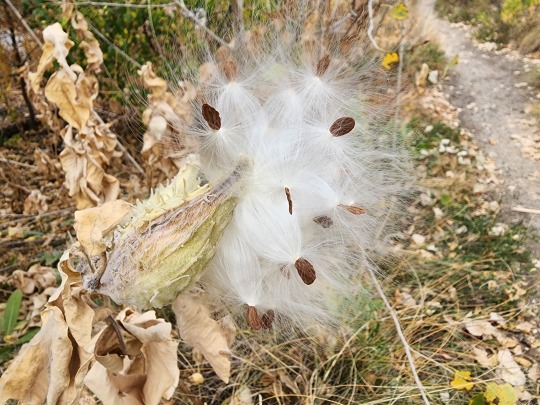
#Milkweed#SeedDispersal#NaturePhotography#BotanicalBeauty#NativePlants#FallNature#WildlifeConservation#MilkweedSeeds#PollinatorPlants#MissedMileMarkers
44 notes
·
View notes
Text
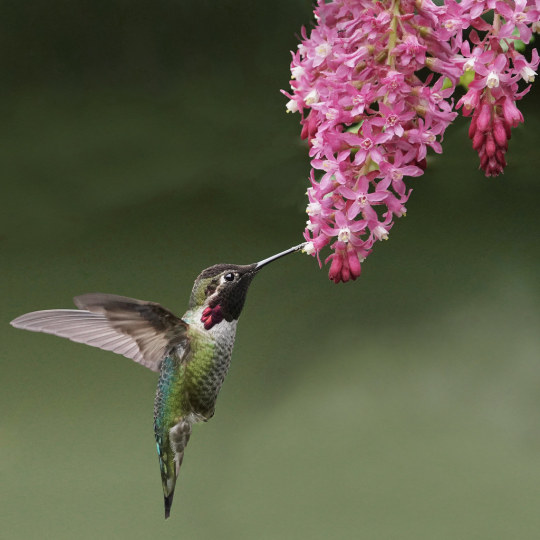
18 notes
·
View notes
Text

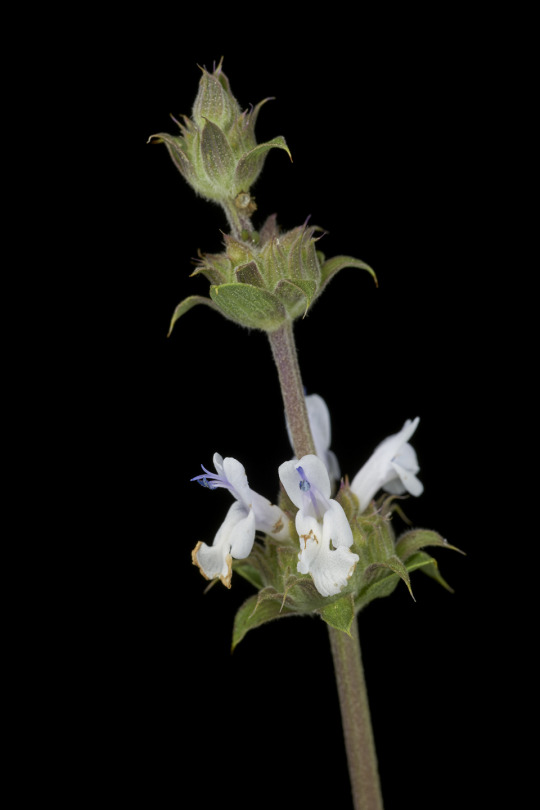
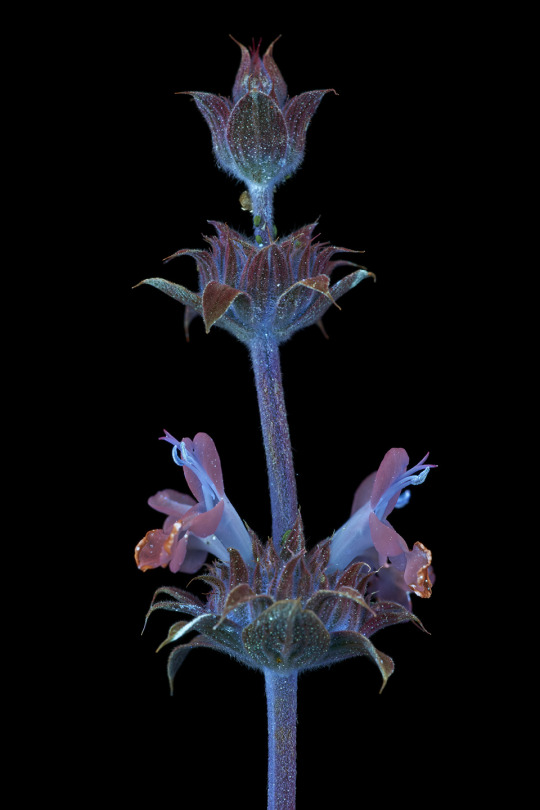
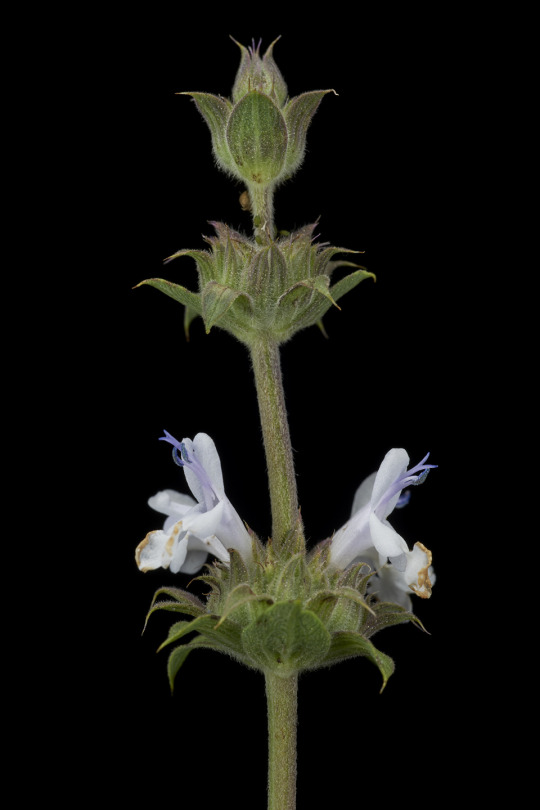

Salvia mellifera, black sage, is a perennial shrub in the mint/sage family native from central California down through the top of Baja California. It is part of the cast of plants present in coastal sage and chaparral habitat, thriving only in a specific range of rainfall in a mediterranean climate. The flowers host a variety of pollinators including butterflies, hummingbirds, and native bees and its seeds, like other Salvia species, are abundant and provide food for animals and birds. The fragrant leaves contain chemicals used by the Chumash to treat pain and a unique spicy honey is derived from the plant in the modern day.
143 notes
·
View notes
Text
Rain Gardens: Managing Water Runoff and Supporting Local Wildlife

With rocky soil, sloped yards, and heavy seasonal rains, smart landscaping can make a difference. One simple and eco-friendly solution is the rain garden. It's a beautiful, low-maintenance feature that protects your yard and supports the environment. A rain garden isn’t just about looks. It’s a shallow, planted area designed to collect and absorb rainwater runoff. It helps filter pollutants, reduce erosion, and provides food and shelter for birds, bees, and butterflies. It’s a great way to manage water while adding life and beauty to your outdoor space.
What Is a Rain Garden?
A rain garden is a shallow area of ground or dip that receives run-off from roofs and other hard surfaces and allows it to soak into the ground. It is planted with plants that can stand waterlogging for up to 48 hours at a time. More drought-tolerant plants are used towards the edges. Rain gardens can also help filter out pollutants in runoff and provide food and shelter for butterflies, song birds, and other wildlife (Rain gardens, n.d. & Soak Up the Rain: Rain Gardens, 2025).

(Illustration by Sanny van Loon in the blog “Eight Ways to Make Your Yard More Environmentally Friendly” by Susannah Herrada published on May 04, 2018)
A rain garden is not a water garden. Nor is it a pond or a wetland. Conversely, a rain garden is dry most of the time. It typically holds water only during and following a rainfall event. Because rain gardens will drain within 12-48 hours, they prevent the breeding of mosquitoes (All About Rain Gardens, n.d.).
How Does a Rain Garden Manage Water Runoff?
(by Rain Garden Network)
🌱 Captures Rainwater at the Source
Rain gardens are typically placed near downspouts, driveways, or other areas where water flows after a storm. By capturing clean rainwater from these areas and diverting it into a great looking rain garden where it can slowly soak into the ground, filter contaminants, and keep quantities of clean water from going down the sewer system you’ll have a great looking garden that puts water in its place. As water enters the garden, the shallow basin slows it down, reducing the risk of flash flooding and erosion.
🌱 Filters Pollutants Naturally
A rain garden can mimic the natural absorption and pollutant removal activities of a forest, or a meadow or a prairie and can absorb runoff more efficiently, sometimes as much as 30% – 40% more than a standard lawn. As water soaks into the soil, layers of sand, compost, and native plant roots filter out pollutants like oil, pesticides, fertilizers, and sediment. This protects nearby rivers, lakes, and groundwater, essential for properties near Lake Huron or the Niagara Escarpment.
🌱 Promotes Groundwater Recharge
Groundwater Foundation notes that rain gardens collect rainwater runoff, allowing the water to be filtered by vegetation and percolate into the soil recharging groundwater aquifers and reducing strain on municipal stormwater systems. These processes filter out pollutants. This is especially valuable in Bruce County’s rural areas, where well water and natural springs are primary sources of freshwater.
By preventing stormwater runoff – water from rain and melting snow that does not soak into the ground – we can prevent water pollution, erosion, habitat degradation and more. Runoff is powerful. It can erode loose material like sand and soil, pick up toxins like pesticides, and liquefy substances like road salt. These harmful materials move with the runoff into our scenic brooks, flowing streams and rivers, and favorite ponds and lakes where they smother habitats, poison aquatic critters and cause water pollution (Rain Gardens: A Beautiful Solution to Stormwater Runoff, 2020).
How Do Rain Gardens Support Local Wildlife?
(by Bluestem Gardening & Clemson Cooperative Extension Home & Garden Information Center)
🌱 Habitat for Pollinators
As native plants establish their roots, they attract a diverse array of pollinators, including bees, butterflies, and hummingbirds. The varying water levels in your garden create distinct microhabitats, from shallow puddles perfect for birds to moist soil where beneficial insects thrive (Barbara, 2025). In Bruce County, native plants like swamp milkweed, purple coneflower, and joe-pye weed are magnets for these pollinators that are essential for healthy gardens and farms across the region.
🌱 Shelter for Small Creatures
Rain gardens provide additional height to a landscape that helps smaller species of wildlife like anoles or frogs avoid predators. Foliage, dead leaves, stems, and branches can act as a form of cover or shelter for wildlife. Stems of native plants also provide crucial wintering and nesting habitats for many of our native solitary pollinator species, like mason bees. Some grasses that can thrive in a rain garden can provide nesting materials for birds to make their nests (Lunt et al., 2025). Also, dense plantings and wet-dry cycles attract frogs, dragonflies, songbirds, and beneficial insects. These creatures help control pests naturally and contribute to a balanced ecosystem.
🌱 Food Sources Year-Round
Many of the native plants that are well adapted to rain gardens are flowering species that provide nectar for pollinators, and they also act as host species for numerous Lepidoptera species (butterflies and moths). In addition, when these flowers go to seed, they act as a food source (Lunt et al., 2025). Birds feed on seed heads in fall, butterflies rely on nectar in summer, and larvae use specific native plants as host species.
Why It Matters in Bruce County?
Rain gardens are especially helpful in Bruce County, where natural areas and new developments often share the same space. With more heavy rain happening due to climate change, it’s important to manage water runoff in a way that’s good for the land. Rain gardens do just that while also helping pollinators and protecting local wildlife. They filter water, reduce flooding, and support the natural beauty of the Bruce Peninsula. If you're looking to improve your outdoor space, AND-ROD Construction Landscaping is a trusted choice for Bruce County’s landscaping services, offering eco-friendly garden and landscape solutions that suit your property.

Citations:
Barbara. (2025, July 5). How a rain garden can transform your permaculture paradise. Bluestem Gardening. https://bluestem.ca/specialized-gardening-methods/how-a-rain-garden-can-transform-your-permaculture-paradise/
Loon, SV. (2018). box7-994x551.jpg. Washingtonian. https://www.washingtonian.com/2018/05/04/rain-garden/
Lunt, S., Maher, M., Porzelt, S. (2025, June 24). Rain Gardens as Wildlife Habitat | Home & Garden Information Center. Home & Garden Information Center. https://hgic.clemson.edu/rain-gardens-as-wildlife-habitat/
May 2020: Rain Gardens: A Beautiful Solution to stormwater runoff. (n.d.). NH Department of Environmental Services. https://www.des.nh.gov/news-and-media/blog/may-2020-rain-gardens-beautiful-solution-stormwater-runoff
Rain Garden network. (n.d.). Rain Garden Network. https://raingardennetwork.com/ Rain gardens / RHS. (n.d.). Royal Horticultural Society. https://www.rhs.org.uk/garden-features/rain-gardens
Soak Up the Rain: Rain Gardens | US EPA. (2025, February 3). US EPA. https://www.epa.gov/soakuptherain/soak-rain-rain-gardens
The Groundwater Foundation. (2022, November 2). All about rain gardens – what they are & how to build one. https://groundwater.org/rain-gardens/
#RainGarden#Landscaping#Gardening#Pollinators#NativePlants#Wildlife#Runoff#Groundwater#Stormwater#Ecofriendly#BruceCounty
3 notes
·
View notes
Text
Harvesting Amaranth seeds with a plastic bag.
61 notes
·
View notes
Video
youtube
Earth Day Valparaiso Indiana With Bob Wichlinski at Porter County Expo C...
#youtube#april earth earthmonth earthday spring Valpo PorterCountyExpoCenter PorterCounty Recycling RainBarrels NativePlants NativeGardening SaveTheB
2 notes
·
View notes
Text
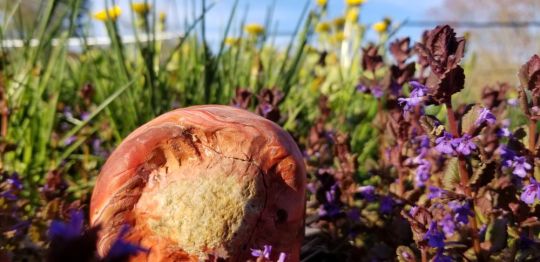
Afternoon sunshine in the meadow.
Dandelions (taraxacum oficinale), Creeping Charlie (Glechoma hederacea), and field grasses.
#golemarmada#sculpture#photography#clay#rock#stone#red#golem#pilgrim#meadow#grass#dandelion#flower#wildflower#farm#purple#green#spring#nativeplants
2 notes
·
View notes
Text
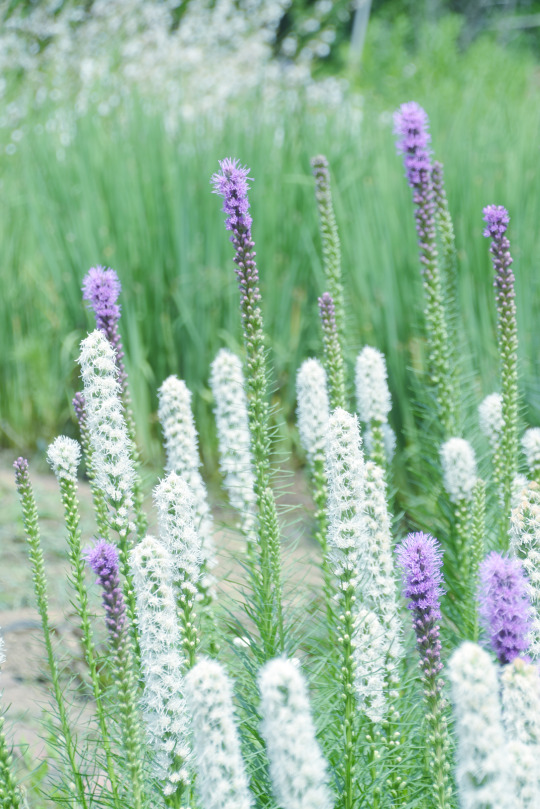
https://www.instagram.com/calmin.gram/
#liatrisspicata#blazingstar#gayfeather#denseblazingstar#densebuttonsnakeroot#marshblazingstar#sessileheadedblazingstar#snakeroot#perennialflower#nativeplant
5 notes
·
View notes
Text
Blooms in the Half-Shade: Daydreaming in Chappaqua
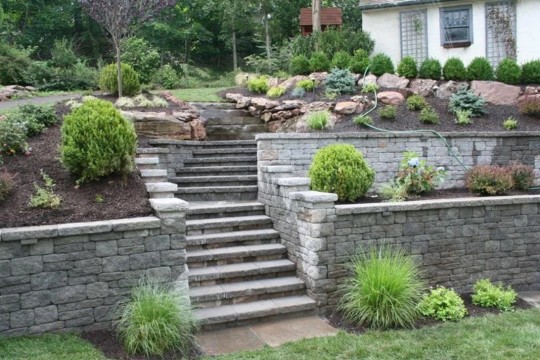
Scrolling Pinterest got me thinking about garden color—a bloom here, a patch of green there—but the variations suggested online never seem to fit my north-facing yard. Every spring, I’m on a mission to coax something new into growing under the shadow of those massive oaks, but it always feels hit or miss. There’s too much shade for roses, not enough for ferns; the soil dries out, then turns swampy with every thunderstorm.
Last month, after a particularly ambitious trip to the local nursery, I found myself spiraling down a research rabbit hole. That’s how I found this local guide: Griffins Landscaping — “Expert Landscaper in Chappaqua.” Here’s the link I bookmarked: https://griffinslandscaping.com/chappaqua/. The approach is different from the usual “just add hydrangeas”: they talk about working with what you have—slopes, mature trees, tricky soils—and designing gardens that thrive instead of fail spectacularly.
What stuck with me is their focus on plant hardiness zones and using native species. There’s mention of shade-loving perennials and the idea that you can have a garden humming with bees even without full sun. I’m no expert landscaper, but the way they describe integrating old rock walls and working around existing trees made me feel seen. So many yards in this area have a kind of wildness, and reading about ways to embrace that instead of fighting it was a revelation.
I’d never considered a pollinator-friendly patch or that a formal-looking hedge could coexist with the soft sprawl of native flowers. The tips about planning paths through tricky grades and using hardscapes to create level areas have me drawing little pencil sketches on napkins during lunch. I keep daydreaming about a meandering shaded garden, something that stays pretty from spring to fall without turning into a swamp or a crisp.
Not sure when I’ll actually break ground (and I am definitely hiding my next nursery bill), but it’s good to remember landscaping doesn’t have to be about fighting the space. Maybe it’s about celebrating what’s already here and making it work for us, shade and all.
#gardeninspo #peekskillgardens #chappaqua #pollinatorplants #shadegardens #nativeplants #outdoorretreat #griffinslandscaping #westchesterliving #backyarddiary
#gardeninspo#peekskillgardens#chappaqua#pollinatorplants#shadegardens#nativeplants#outdoorretreat#griffinslandscaping#westchesterliving#backyarddiary
0 notes
Text
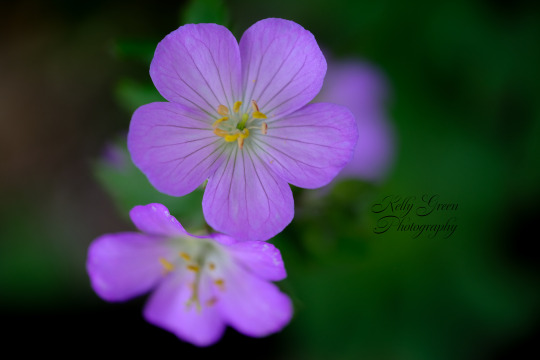
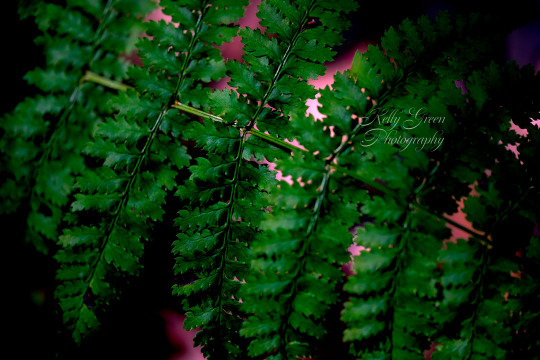
Just photo editing today.
1 note
·
View note
Text
Making the Most of a “Blank Canvas” Yard
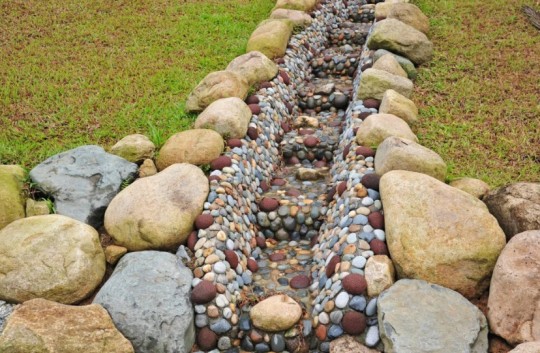
Rainy weekday afternoons get me daydreaming about what our yard could be, instead of what it’s always been—a bit bland, a bit patchy, and definitely not as balanced as I’d like. Monroe’s gardens always seem to nail the “blank canvas to lush oasis” transformation, and I quietly covet the perfect balance of structure and whimsy folks manage to pull off there.
So, I started Googling local inspiration and landed on this breakdown from Eight Lanes Landscaping for Monroe: Expert Landscaping in Monroe, CT (https://eightlaneslandscaping.com/monroe/). Their philosophy is simple: Don’t just mow and go; look at every property with fresh eyes, no matter the starting point. Their advice on making irregular, even slightly awkward spaces work with thoughtful planting and smart layouts helped me see my own yard differently.
The focus on native species and using planting beds for actual structure—not just color—felt like an answer to my paralysis about where to start. They combine stonework (walls, edging, terracing) and careful placement to create zones: a place for lounging, a space for a small kitchen garden, a shady nook for reading. Suddenly the vague blob of my lawn felt brimming with “sections” I could actually design for.
But I was most inspired by the suggestion to treat the first improvements as layers—starting with framing the patio in low evergreens, then adding color and height with perennials, and finally, saving a corner for a future big feature (maybe even a small pond?). I loved the non-urgent tone: While doing one thing right, it’s perfectly fine to leave the rest as “active wild,” waiting for next season’s phase.
I’m not feeling pressured to transform everything all at once for the first time. In fact, I might just focus on carving out a functional “outdoor room” for reading this year, and let the rest come into focus over time.
#yardmakeover #monroect #DanburyInspiration #landscapetransformation #nativeplants #backyardzones #gardenplanning #eightlaneslandscaping
#yardmakeover#monroect#DanburyInspiration#landscapetransformation#nativeplants#backyardzones#gardenplanning#eightlaneslandscaping
0 notes
Text
Quiet Corners and Shade Garden Daydreams
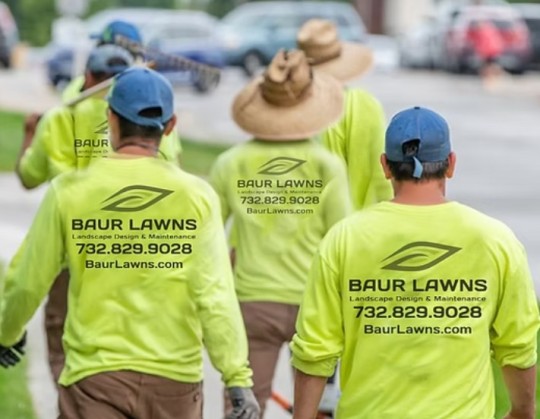
I’ll admit it: I’ve been quietly obsessed with creating a quiet part of the yard.
Not a whole makeover. Not a play space or a party zone or even a grill station. Just a small, shady spot where I can sit with a cup of coffee and listen to the birds, maybe read a chapter, maybe do nothing at all.
Funny enough, the idea really came together after reading about Baur Lawns' work in Tinton Falls. That page was like a little nudge from the universe saying, “Hey, not everything in your yard has to be high-energy.”
Tinton Falls, with its mix of wooded areas and old-growth trees, really leans into natural serenity. The landscaping ideas Baur Lawns brings to that kind of environment? So intentional. They talk about creating layered plant beds under tree canopies, incorporating mulch paths, and adding stone benches or sitting nooks—exactly the kind of low-key elegance I’ve been picturing.
One example showed a tucked-away flagstone path curving gently through hostas and ferns, with a simple wooden bench at the end. No flashy fountain. No blazing fire pit. Just green, shade, and stillness. That image has been living rent-free in my brain ever since.
I realized that I have a similar underused area on the north side of my house—gets dappled sunlight in the morning, stays cool in the afternoon. Right now, it’s full of overgrown groundcover and old utility stone. But maybe it’s not just an afterthought. Maybe it’s potential.
What really spoke to me was the way Baur Lawns described working with the existing tree line instead of against it. So many landscapers try to bulldoze nature into something neat and symmetrical. But in Tinton Falls, they celebrate the slope, the roots, the shadows. It’s about building into the woods, not erasing them.
And the idea of using native shade-loving plants? A game-changer. I always assumed gardening in low light meant giving up on color or texture. But there are actually tons of options—coral bells, astilbe, Japanese forest grass—that thrive in those exact conditions. Low maintenance, high vibe.
Even their hardscape choices are more muted for shaded spaces. Softer stone tones, curved lines, natural edges. It’s less about making a statement and more about inviting you in. That’s the energy I want.
Now I’m sketching a little plan: pull up the ivy, lay down a crushed gravel path, plant a row of low ferns, and maybe install a solar lantern or two. It doesn’t have to be dramatic. It just has to feel like mine.
Sometimes, the boldest thing you can do with your outdoor space is make it quiet.
#shadegarden #marlboroyards #tintonfallsliving #peacefulbackyard #landscapeinspo #baurlawns #nativeplants #lowmaintenanceyard #njgardening #shadelandscaping #quietspaces
#shadegarden#marlboroyards#tintonfallsliving#peacefulbackyard#landscapeinspo#baurlawns#nativeplants#lowmaintenanceyard#njgardening#shadelandscaping#quietspaces
0 notes
Text
It’s wild what a little nature can do for your mood
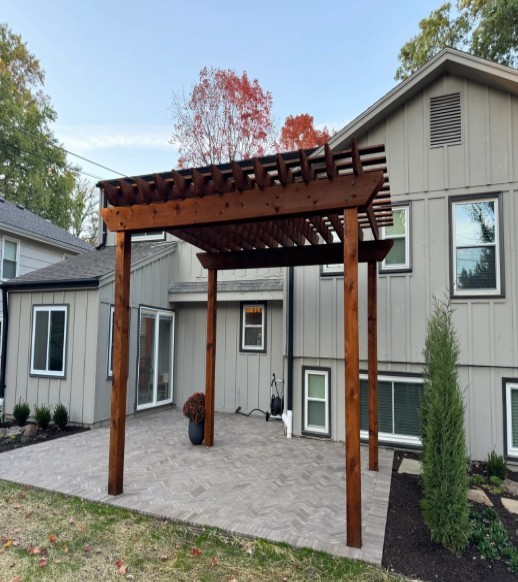
I drove out to Loch Lloyd last month to visit a friend who just moved into one of those storybook homes tucked between trees and hills. You know the ones—perfectly trimmed hedges, winding paths, and a view that feels like a secret. Her place isn’t huge, but the yard? Stunning.
It wasn’t even anything over-the-top. Just... thoughtful. A balance of shade and light, with healthy grass and beds that weren’t screaming for attention but just quietly worked. The kind of yard where you instinctively take your coffee outside in the morning.
And of course, I came home and looked around at my own patchy lawn and said: “Okay, yeah. We need to figure this out.”
Loch Lloyd Energy, But Make It Kansas City
We don’t live in Loch Lloyd (someday maybe?), but I started digging around for ideas anyway—something to bring even a little of that peaceful vibe into our space. That’s how I came across this page from Top Tier Landscaping: 🌿 https://toptierlandscapingkc.com/loch-lloyd-kc/landscaping/
It was a great read—not salesy, just full of info that made me realize how much smarter I could be about my yard. Like, I’ve always thought landscaping was mostly about plants, but this broke it down as a full system: drainage, design, light, use of space, seasonal changes. Stuff that actually matters.
They mention things like Loch Lloyd’s rocky soil and how local conditions affect plant health. And even though we’re not in that exact area, a lot of it applies to our yard too—especially that mix of sun and shade that’s made choosing plants feel like a gamble every year.
Rethinking What “Done Right” Looks Like
Reading through their process, I realized something: I’ve been landscaping like someone who’s winging it. Buying whatever looks nice at the garden center, crossing my fingers, and hoping it survives a Kansas summer. Meanwhile, these folks are doing custom layouts, picking the right plants, and designing for the long-term.
They also talk about installing sod and turf for easy upkeep, using organic landscaping to avoid harsh chemicals (huge bonus if you have pets or kids), and designing lighting that turns the yard into something you can actually enjoy after dark.
One line stuck with me: “We plan around how your space is used.” That was the lightbulb moment. I’ve been planning around how it looks. Not how we actually live in it.
The Vision Is Simpler Than I Thought
I don’t need a luxury estate vibe. But I do want a yard that feels peaceful.
So I started sketching out ideas, literally on a napkin at first. Here’s what’s on the dream list now:
Replace the patchy grass with low-maintenance sod—something lush and soft that can survive my kids and a golden retriever.
Add some shrubs and perennials along the back fence. Nothing too fussy—maybe lavender, Russian sage, or native ornamental grasses.
Install soft lighting under the trees and along the path. Enough to make the evenings feel cozy without it looking like a runway.
Fix the drainage issue in the back corner that turns into a mini-pond every spring. That might be the least glamorous upgrade, but probably the one I’ll appreciate most.
Maybe, maybe, a small seating area tucked under the shade. Something for coffee in the morning and wine at dusk.
It’s not over-the-top. But it’s intentional. And that’s the difference.
No Pressure. Just Possibility.
I’m not in a rush to tear everything up. But it feels good to have a plan—a real plan—not just a cart full of impulse plants and a weekend of regrets. Top Tier’s guide helped shift my thinking. Landscaping isn’t something you finish. It’s something you shape, slowly.
And even though my address doesn’t say Loch Lloyd, I’m stealing that vibe one idea at a time.
Here’s to making your yard a place you want to be. Even if it starts with just one plant.
#LochLloyd #KansasCityBackyards #yardinspo #landscapedesign #outdoorlivingKC #nativeplants #midwestgardens #TopTierLandscaping #peacefulspaces #landscapingdreams
#LochLloyd#KansasCityBackyards#yardinspo#landscapedesign#outdoorlivingKC#nativeplants#midwestgardens#TopTierLandscaping#peacefulspaces#landscapingdreams
0 notes
Text
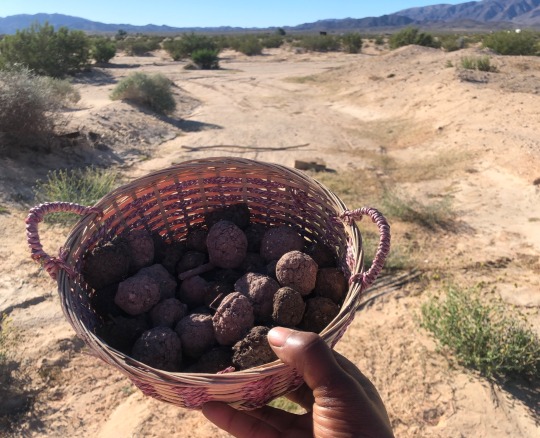
I’d like to thank everyone who participated in donating to the native seed fund and helped make seed balls for the desert restoration project at the RA Ranch.
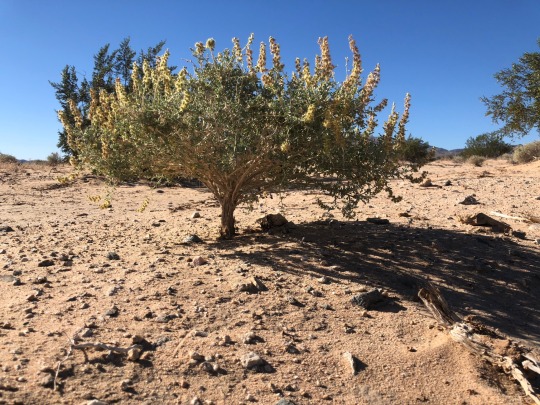
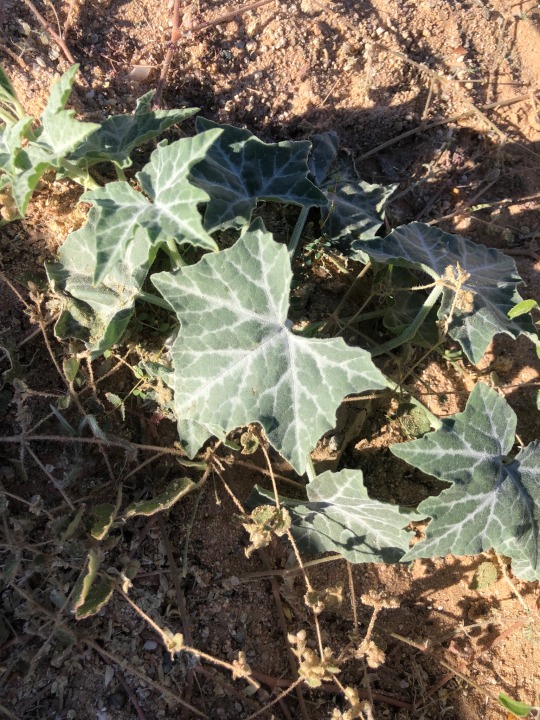
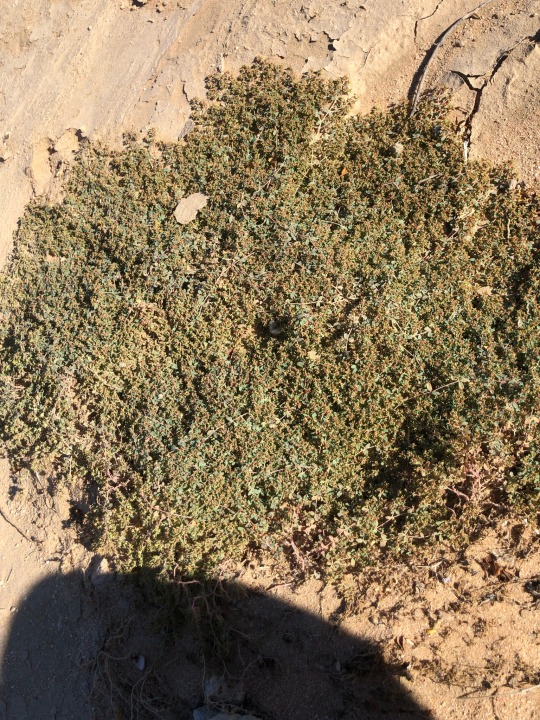
41 notes
·
View notes
Text
Want to build a garden that supports wildlife and biodiversity? This article shares what to include—like native plants, water sources, and shelter—and what to avoid, such as chemicals and invasive species. Create a thriving, eco-friendly space that benefits birds, bees, and more. Start your wildlife-friendly garden today! Read this article for more details.
#wildlifegarden#biodiversitygarden#nativeplants#gardenfornature#ecoandgreen#pollinatorfriendly#sustainablegardening#gardentips#wildlifehabitat#naturelovers
0 notes